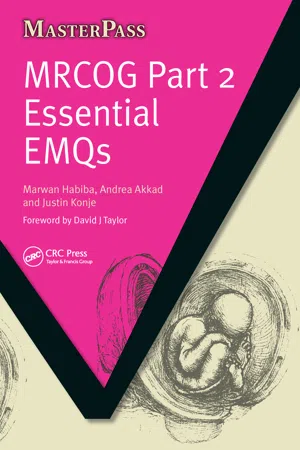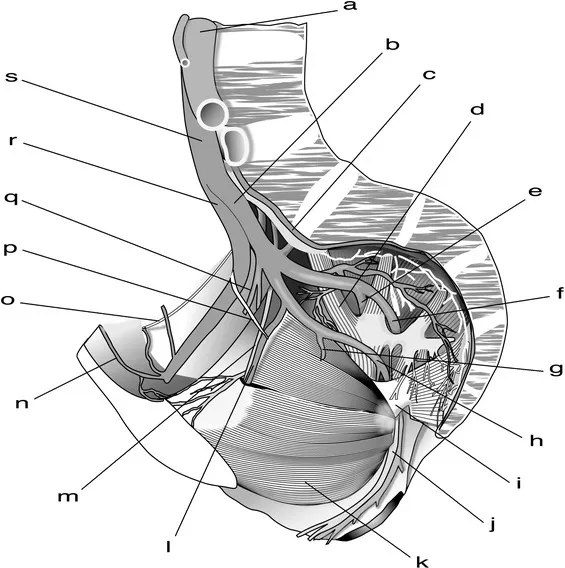
- 168 pages
- English
- ePUB (mobile friendly)
- Available on iOS & Android
About This Book
This title includes Foreword by David Taylor, Professor and Vice Dean of Leicester Medical School. Preparing for the Part 2 MRCOG examination remains a daunting and complex task, particularly as learning and revision often need to fit around clinical commitments. Much has been written about how to prepare for and pass exams, yet it remains surprising how often well-read candidates provide unsatisfactory answers in areas which they know well. Clearly, a sound understanding of the topic area is essential, but deeper knowledge also increases uncertainty, and the vast developments in the field mean that proficiency in all areas is next to impossible. Thus a critical point for postgraduate candidates, who more often than not will prepare for the examination in isolation, is to develop a real understanding of what the examination is meant to assess...This revision aid in obstetrics and gynaecology is based on the Extended Matching Question format (EMQ). It contains forty-two questions of varying degrees of difficulty, along with detailed answers. "MRCOG Part 2 Essential EMQs" is an indispensable study and revision aid for postgraduate medical students preparing for Part 2 of the Membership of the Royal College of Gynaecologists (MRCOG) examination or equivalent. "The number of published revision aids including this question format in postgraduate Obstetrics and Gynaecology remains limited. With this book we wanted to produce a comprehensive selection of EMQ, covering broad areas relevant to the speciality, which would be useful those preparing for postgraduate examinations at Part 2 MRCOG level or equivalent." - Marwan Habiba, Andrea Akkad, Justin Konje.
Frequently asked questions
Information
Questions
Applied basic sciences
Q1
Options:
A | Mullerian agenesis |
B | Incomplete division of metanephric diverticulum |
C | Absent fusion of paramesonephric ducts |
D | Incomplete lateral fusion/septum resorption |
E | Right-sided Mullerian duct hypoplasia |
F | Incomplete vertical fusion of sinovaginal bulb with Mullerian system |
G | Absent mesonephric ducts |
H | Absence of Mullerian-inhibiting substance |
I | Incomplete fusion of paramesonephric ducts |
J | Agenesis of Wolffian ducts |
K | Left-sided Mullerian duct hypoplasia |
Lead-in:
Q2

Lead-in:
Table of contents
- Cover Page
- Title Page
- Copyright Page
- Contents
- Foreword
- Preface
- About the authors
- Introduction
- Reading list
- Abbreviations
- Questions
- Answers
- Index